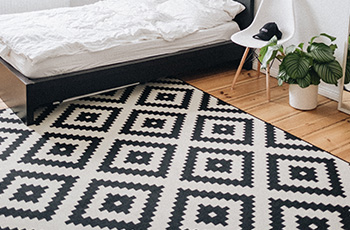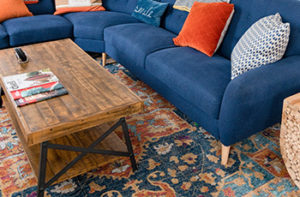Your Guide to 10 Types of Area Rugs & Rug Materials
Your Guide to 10 Types of Area Rugs & Rug Materials
Introduction
Area rugs play a pivotal role in interior design, with the choice of material significantly impacting the look and feel of a space. In this guide, we’ll delve into 10 popular area rug materials, highlighting the unique qualities that each brings to the table.
1. Jute Rugs
Jute rugs, crafted from natural jute fibers, exude an earthy and rustic charm. Known for their soft texture, these rugs are ideal for creating a laid-back atmosphere in casual spaces, making them a favorite among eco-conscious consumers.
2. Sisal Rugs
Sisal rugs, woven from sisal fibers (sometimes blended with other natural fibers), boast a textured surface and impressive durability. Ideal for high-traffic areas, these rugs appeal to those seeking a natural aesthetic with a touch of resilience.
3. Wool Rugs
Wool rugs, made from natural wool fibers, offer a luxurious, soft, and durable flooring solution. Perfect for low to moderately trafficked areas, these rugs are especially favored by allergy-prone individuals.
4. Polypropylene Rugs
Constructed with synthetic polypropylene fibers, these rugs resist stains, fading, and moisture, making them an excellent choice for outdoor spaces, high-traffic areas, and households with children or pets.
5. Nylon Rugs
Nylon rugs, featuring synthetic nylon fibers, are known for their durability, resilience, and ease of cleaning. Suited for high-traffic areas and households with active children and pets, these rugs maintain their appearance over time.
6. Polyester Rugs
Soft to the touch and available in vibrant colors, polyester rugs, made from synthetic polyester fibers, are an affordable option suitable for low-traffic areas and bedrooms.
7. Tencel Rugs
Tencel rugs, crafted from the sustainable fiber Tencel derived from wood pulp, offer a silky and lustrous finish. Ideal for those seeking a blend of luxury and environmental friendliness.
8. Blends
Blended rugs incorporate various fibers (e.g., wool and nylon) to achieve enhanced durability and texture. Perfect for customizing rugs that balance different material properties.
9. Woven Rugs
Woven rugs, created through a traditional interlacing process, are dense and sturdy, often featuring reversible designs. Suitable for adding classic charm to both modern and traditional settings.
10. Tufted Rugs
Tufted rugs, crafted by looping yarn through a backing to create a pile, offer versatile styles at more affordable price points. Ideal for budget-conscious consumers with various design preferences.
Choosing the Right Rug Material
Consider your lifestyle, traffic patterns, and cleaning preferences when selecting the perfect rug. Each material has specific care requirements, ensuring your rug remains both stylish and functional throughout its lifespan.
Conclusion
Selecting the perfect area rug involves understanding the unique characteristics of different materials. Whether you prioritize eco-friendliness, durability, or luxury, each material has its own set of benefits. Consider your lifestyle, design preferences, and maintenance capabilities to find the ideal rug that enhances your space and meets your practical needs. Happy rug shopping!
Where to Buy Custom Area Rugs in Portland
Though these are the most popular types of area rugs, there are near-endless options! If you need help figuring out which rug weave is right for you or are interested in creating a custom design, our in-house design consultants are here to assist.
Floor Factors is proud to offer products from a broad range of industry-leading manufacturers, including carpets, area rugs, rug pads, and discounted flooring remnants. As a one-stop-shop resource for residential remodels, we carry window coverings, custom cabinets, and countertop materials as well.
Contact our Portland flooring company for a quote on a custom order or stop by our showroom in the Pearl District.



